How to grow succulent plants in cultivation of succulent plants
Succulent plants are also called succulent plants and succulent plants. They are sometimes called succulent flowers in horticulture, but the name succulent plants is most commonly used. Common cultivated succulents include the cactus family, the apricot family, the euphorbia family, the crassulaceae family, the lily family, the ascetic family, the agave family, and the composite family. So what is the method of growing succulent plants?
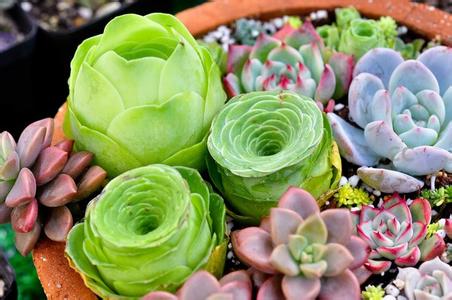
Method for planting succulent plants
Cultivated soil requires loose soil, good drainage, but has a certain ability to retain water, neutral or slightly acidic. Highland balls (Luna, Luna, Euphorbia) and rock peony can add a little bit of chaff ash and small weathered rocks. Tall columnar species may be mixed with large grains of quartz sand to anchor plants.
Transplantation and planting should generally be carried out during the recovery period immediately after dormancy. Root before planting. After pruning roots to air for a few days and then plant with moist culture soil, after planting appropriate shade and do not rush to water, do not fertilize within a month.
Temperature and light regulation Cactus and succulent plants usually prefer warmth and larger diurnal temperatures. Except for epiphytic cacti and dodecaphora species, the light should be adequate but soft. Therefore, except for a few flat stem nodes and tall columnar species and some agave plants, they should be cultivated in greenhouses all year round. The epiphytic species should be shaded except in winter, and the shade degree should be 50% to 70% in summer combined with cooling. Although epiphyllum and lily have certain cold resistance, keeping warm in winter is conducive to flowering in the following year. As rootstock used and mass cultivation of the sky ruler is not cold, winter at least to maintain 5℃ and require full sunlight. Most terrestrial types of cacti grow most vigorously at 28℃ to 35℃ during the day and 10℃ to 15℃ at night. When the indoor temperature is often higher than 35℃ to 38℃, the growth stagnates, and some species of highland balls and trichomes are also easy to rot. Therefore, it must be cooled down, but not so much in order to cool down as it is for epiphytes. Most terrestrial species can withstand low temperatures of 2℃ or even 0℃ in winter when the soil in the basin is kept dry, but they cannot directly withstand frost and snow. The higher temperatures were maintained for the Caribbean native species and for the winter flowering species. Summertime succulent plant that regulates temperature basically by referencing terrestrial cacti. They require relatively low light, some species with expanded stem bases are not cold tolerant and should maintain high temperatures in winter. Succulent plants growing in winter should be ventilated and cooled to keep cool during the summer dormancy period. In winter, sufficient sunshine is required, and the minimum temperature is maintained above 7℃.
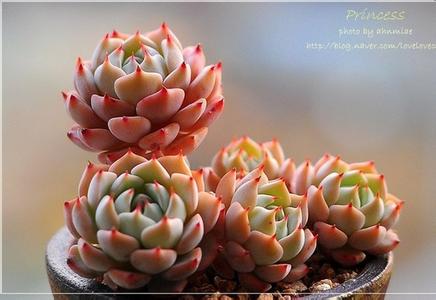
Watering and fertilization Watering should be carried out according to its growth state. No matter winter dormancy or summer dormancy species, stop watering pots during dormancy. However, summer dormant species must be exposed to water in walkways and other places to maintain a certain air humidity. The plants in vigorous growth period should fully meet their water requirements. Small seedlings should be watered more, big balls should be less (refer to the number of times); terrestrial type of less watering, epiphytic type of more watering; bud flowering period more watering, flowers and fruits behind less watering; more leaves and thin more watering, thick leaves and less watering. Fertilization should be carried out in the vigorous growth period and bud stage. Organic fertilizer must be fully decomposed. When applying chemical fertilizer, the ratio of nitrogen, phosphorus and potassium is 5∶15∶10 or 5∶10∶10, and a small amount of trace elements should be mixed. Fertilization is light rather than thick, and can be applied several times when needed. No fertilizer is allowed for plants with damaged roots, poor growth, and wounds in stems and leaves.
Pest control Pest control is mainly based on prevention. First of all, the environment should be clean. Exotic plants must be strictly controlled and placed in the shed only when no diseases and insect pests are confirmed. Concentrated spraying in the shed in early winter, early spring and before plum rain had twice the result with half the effort. In addition, it has a good preventive effect on the disinfection of culture soil. Commonly used agents are mainly fungicides for disease prevention and treatment (such as carbendazim, thiophane, chlorothalonil, zinc, etc.) and insecticides (such as omethoate, acaricide, marathon, fenvalerate, etc.), which can be prescribed. The concentration of pesticides should be controlled strictly according to the instructions, especially pesticides, which will cause phytotoxicity if the concentration is slightly concentrated, and the crown and some succulent plants of Euphorbiaceae are especially sensitive to this. Spray several times to be effective (2 days interval). After using the same drug twice, change one kind. Long-term use of a pesticide is easy to produce drug resistance.
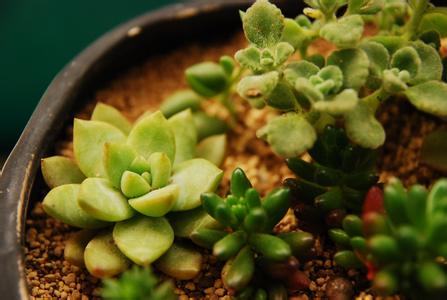
Potting method for succulent plants
1. Whether it is bought from flower market, greenhouse or online shopping, the soil of the original basin shall be thrown away. (Online shopping generally does not carry pot soil)
2. Wash the roots of the plants. Make sure that the roots have been washed out of most of the soil. Because it probably contains a lot of eggs and bacteria. Wash gently, roots are inevitable, but as little as possible. The roots can be shaken back and forth in a basin of water. It is recommended not to open a large tap with very strong water flushing, so that the root system will be broken in large numbers. This repeated shaking bubble wash a few times, can see the white taproot.
3. After cleaning the roots, if you feel it is necessary, repair the roots. Cut off those blackened or even only empty shell of the diseased roots, dead roots. And appropriate pruning off those who grow too long, a large number of winding lateral roots, in order to promote the growth of new fibrous roots. This will make the entire root system appear evenly distributed and neat. After root pruning, the new roots that regrow will be strengthened, making the plant grow stronger. If you don't feel confident, you don't have to repair it. It doesn't matter. Just pluck the dead root and the diseased root.
4. At this time, the root system will definitely be damaged, and then it needs to be soaked in the prepared sterilization solvent for about an hour. Carbendazim, chlorothalonil, thiophanate-methyl are available. Do not adjust the concentration too high, you can soak multiple plants in a small washbasin.
5. After the sterilization process is completed, dry the roots of the plants. Note that it is naturally dried. It usually takes a few hours (or so) to get to the bottom of the pot.
6. Prepare planting materials and disinfect them in advance.
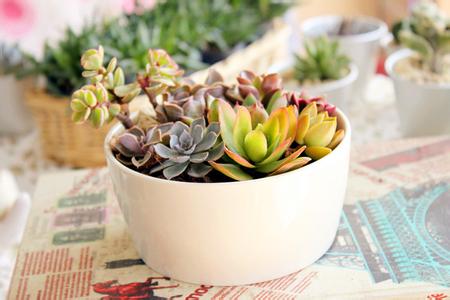
Main points of potted succulent plants
A potted plant is succulent and very different from other potted plants. The proper size of the plant has a great influence on the appearance of the plant. A common misconception is that you want to give plants plenty of room to grow in large pots so they can grow fast and well. In fact, the opposite is true, and many meatiness slows growth in this case. Some rare slow-growing species may even stop growing altogether because they just don't like being in so much damp soil. Many sophisticated growers are already reflecting on this problem and giving up on oversize implants.
When changing pots, increase the size of the pots by just 0.5 inches (1.27 centimeters). For pots larger than 5 inches (12.7 cm), an upgrade of 1 inch (2.54 cm) is sufficient. If you use too many planters, the roots will grow out of proportion to the rest of the plant, resulting in energy being spent on branches and leaves. Some of the trees had large crowns, thin branches, and soft leaves. It was obvious at a glance that the pots were too large.
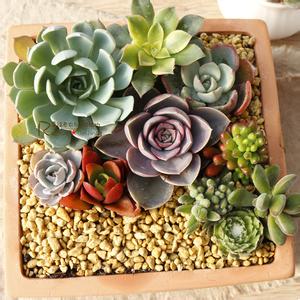
The above is the content of the succulent plant planting method introduced by Xiaobian for everyone, hoping to explain it to you.
Wash gently, roots are inevitable, but as little as possible. The roots can be shaken back and forth in a basin of water. It is recommended not to open a large tap with very strong water flushing, so that the root system will be broken in large numbers. This repeated shaking bubble wash a few times, can see the white taproot.
3. After cleaning the roots, if you feel it is necessary, repair the roots. Cut off those blackened or even only empty shell of the diseased roots, dead roots. And appropriate pruning off those who grow too long, a large number of winding lateral roots, in order to promote the growth of new fibrous roots. This will make the entire root system appear evenly distributed and neat. After root pruning, the new roots that regrow will be strengthened, making the plant grow stronger. If you don't feel confident, you don't have to repair it. It doesn't matter. Just pluck the dead root and the diseased root.
4. At this time, the root system will definitely be damaged, and then it needs to be soaked in the prepared sterilization solvent for about an hour. Carbendazim, chlorothalonil, thiophanate-methyl are available. Do not adjust the concentration too high, you can soak multiple plants in a small washbasin.
5. After the sterilization process is completed, dry the roots of the plants. Note that it is naturally dried. It usually takes a few hours (or so) to get to the bottom of the pot.
6. Prepare planting materials and disinfect them in advance.

Main points of potted succulent plants
A potted plant is succulent and very different from other potted plants. The proper size of the plant has a great influence on the appearance of the plant. A common misconception is that you want to give plants plenty of room to grow in large pots so they can grow fast and well. In fact, the opposite is true, and many meatiness slows growth in this case. Some rare slow-growing species may even stop growing altogether because they just don't like being in so much damp soil. Many sophisticated growers are already reflecting on this problem and giving up on oversize implants.
When changing pots, increase the size of the pots by just 0.5 inches (1.27 centimeters). For pots larger than 5 inches (12.7 cm), an upgrade of 1 inch (2.54 cm) is sufficient. If you use too many planters, the roots will grow out of proportion to the rest of the plant, resulting in energy being spent on branches and leaves. Some of the trees had large crowns, thin branches, and soft leaves. It was obvious at a glance that the pots were too large.

The above is the content of the succulent plant planting method introduced by Xiaobian for everyone, hoping to explain it to you.
Related
- Wuhan Hospital Iron Tree Blooming Result Was Instantly Frightened by the Gardener Master
- Which variety of camellia is the most fragrant and best? Which one do you like best?
- What is the small blue coat, the breeding methods and matters needing attention of the succulent plant
- Dormancy time and maintenance management of succulent plants during dormancy
- Minas succulent how to raise, Minas succulent plant pictures
- What are the varieties of winter succulent plants
- How to raise succulent plants in twelve rolls? let's take a look at some experience of breeding twelve rolls.
- Attention should be paid to water control for succulent plants during dormant period (winter and summer)
- Watering experience of twelve rolls of succulent plants
- Techniques for fertilizing succulent plants. An article will let you know how to fertilize succulent plants.



